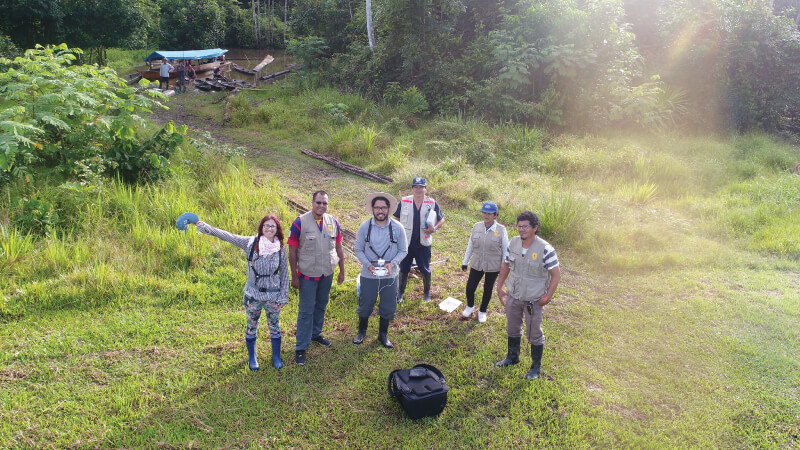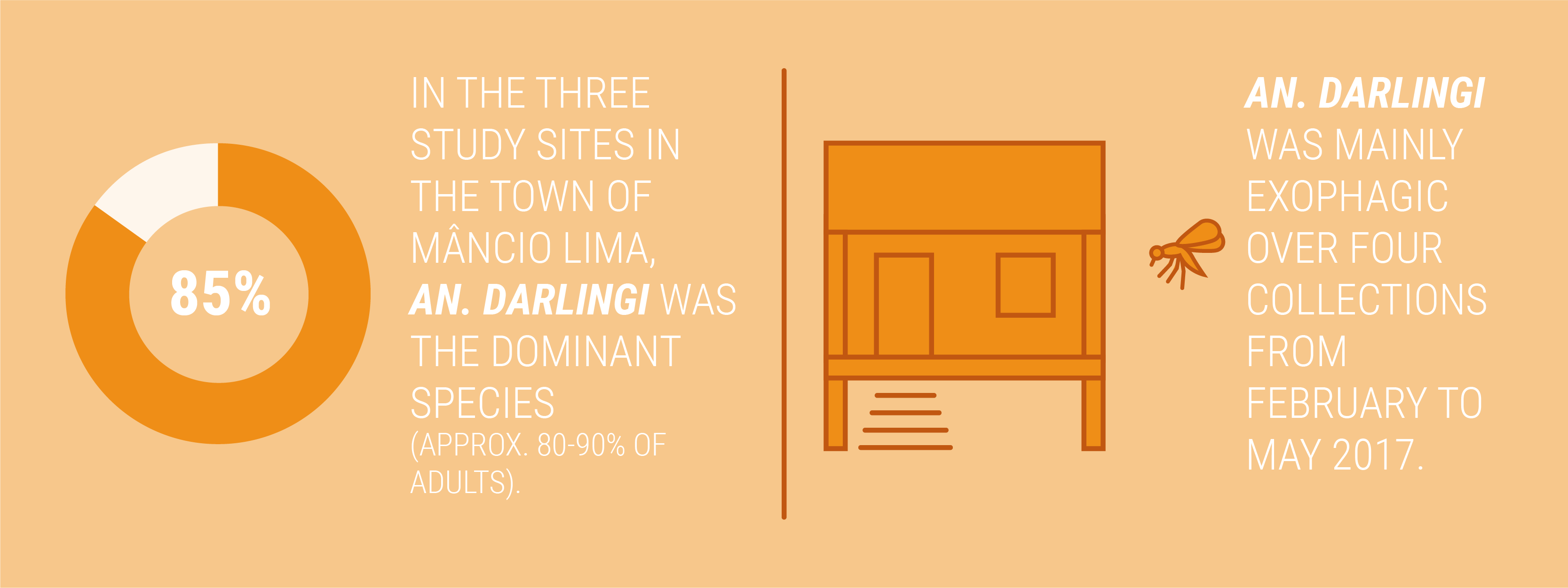Key Findings

The key findings below relate to Objective 3: to determine vector biology metrics, quantify environmental variables of aquatic mosquito habitats and genetically characterise immature and adult Anopheles darlingi along the Mazán and Napo Rivers and in Mâncio Lima.
Results related to Objectives 1 and 2 are pending analysis and are dependent on the detailed maps of malaria case distribution per village (which are currently in progress).
The findings will be used in order to identify local indicators of malaria transmission, calculate and interpret local malaria transmission factors, and generate evidence for improvement of control measures, adjusted to local patterns of residual malaria transmission (RMT).
Peru
1. An. darlingi was the most common species
- An. darlingi was the most abundant species of mosquito collected in each of the sites.
- The infectivity rate (IR) of about 6,300 An. darlingi was approximately 1.6% (for Plasmodium falciparum and Plasmodium vivax). The Entomological Inoculation Rate (EIR) was higher in Mazán River villages.
2. Similarities and differences in vector behaviour between the Napo and Mazán Rivers
- Villages located on the Mazán River presented greater abundance of An. darlingi, a higher An. darlingi Human Biting Rate (HBR), Entomological Inoculation Rate (EIR), and a higher Human Blood Index (HBI) than those on the Napo River, with a common abundance peak in June.
- The information obtained so far supports other findings at the epidemiological level (Carrasco-Escobar et al, 2017), which show different malaria transmission patterns between the Napo and Mazán Rivers.
- In general, however, mosquito populations were more exophilic (prefer to be outdoors) and exophagic (prefer to feed outdoors) in the Napo and Mazán river basins.
.png)
3. Similarities and differences in larvae between the Napo and Mazán Rivers
- There was bacterial diversity in larvae of An. darlingi, An. triannulatus s.l., and An. rangeli; in particular, greater differences in microbiota were found between the larvae of different anopheline species than between water bodies.
- More anopheline larvae (approx. 75% of 856 larvae collected) were present in water bodies within one kilometre of villages on the Napo River than in water bodies within one kilometre of villages on the Mazán River.
Brazil
None of 190 An. darlingi collected in February 2017 and tested for Plasmodium infectivity with reverse transcription polymerase chain reaction (RT-PCR) were infected. Approximately 550 additional An. darlingi adult samples from the remaining months are currently being tested.
Analyses are in progress for the 68 water bodies that were characterised and 8 080 Anopheline larvae that were collected from them between February and May 2017.
An. darlingi was mainly exophagic over four collections from February to May 2017.


